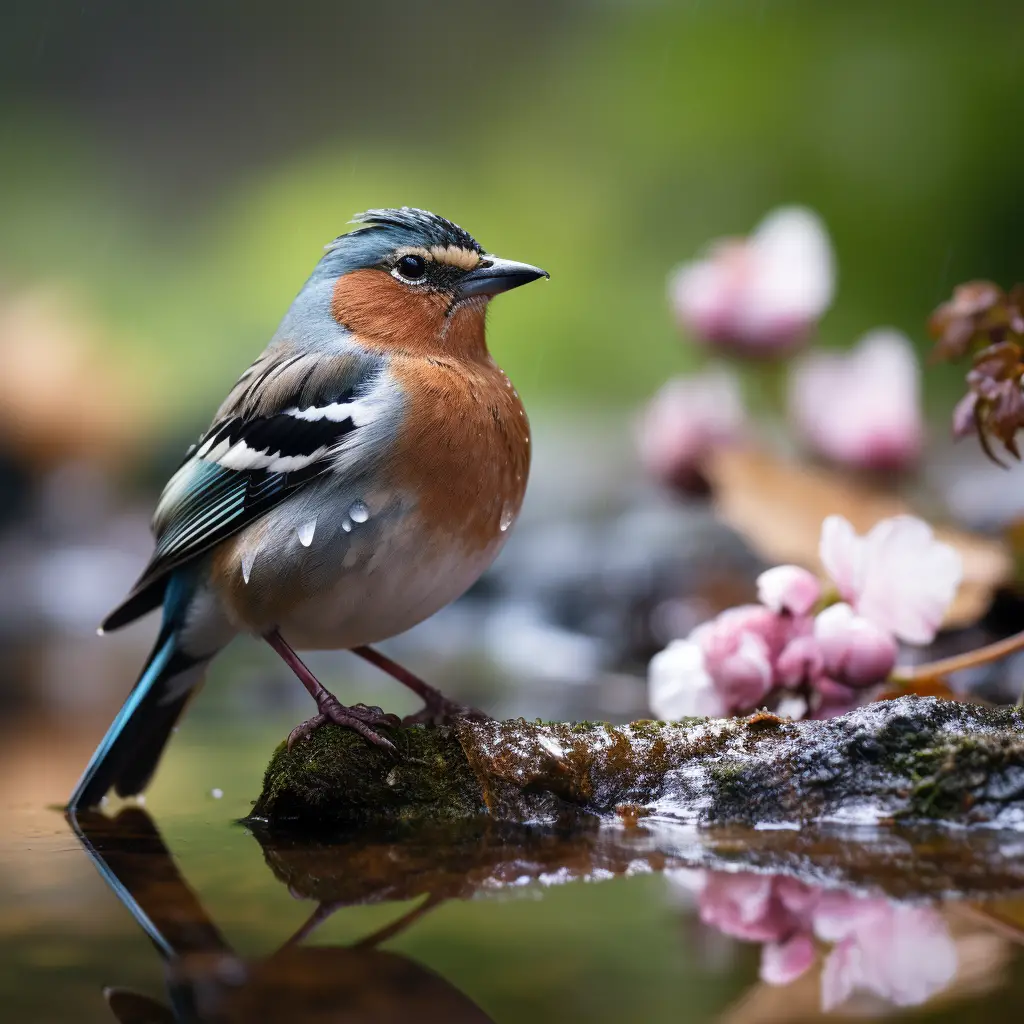
Most people know that spider mites can be a major problem for cannabis growers, but did you know that they can also be a problem at harvest time? In this article, we will discuss everything you need to know about spider mites on buds at harvest time, including how to identify them, how to treat them, and how to prevent them from causing damage.
What Are Spider Mites?
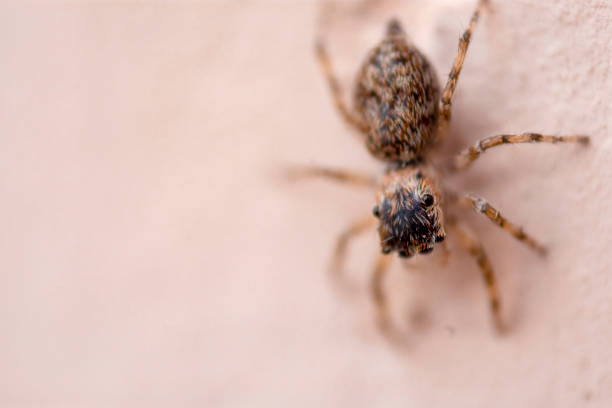
Spider mites are tiny spider-like creatures that thrive in warm, dry conditions. They are attracted to a wide variety of plants, including both indoor and outdoor plants. While they are unlikely to cause serious harm to humans, they can cause extensive damage to crops and gardens.
Spider mites are difficult to control once they become established because they reproduce quickly and have a high tolerance for pesticides. In addition, spider mites can rapidly develop resistance to pesticides that are used repeatedly. For these reasons, it is important to take preventive measures to avoid an infestation in the first place.
Identifying Spider Mites
One of the first signs that you have spider mites is raised bumps or blisters on the leaves of your plants. These bumps are caused by the spider mites feeding on the sap of the plant. The bumps will eventually turn yellow or brown and may even fall off altogether. Leaves that have been damaged by spider mites will also have a stippled or speckled appearance.
Another way to tell if you have spider mites is to hold a sheet of white paper underneath a leaf and tap it gently. If you have spider mites, you’ll see tiny moving dots on the paper. These dots are actually the spider mites themselves!
Preventing and Treating Spider Mite Infestations
There are several things you can do to prevent spider mites from infesting your plants. First, avoid over-watering your plants as damp conditions are not conducive to spider mite growth.
Second, limit the amount of dust buildup on your plants as dust can provide shelter for spider mites and make it difficult for predators to find them. Finally, introduce predatory insects into your gardens such as ladybugs and green lacewings, which will feed on spider mites.
If your plants are already infested with spider mites, there are several things you can do to get rid of them. One option is to spray your plants with water regularly as spider mites prefer dry conditions.
You can also try introducing predatory insects into your garden or using an insecticide labeled for use against spider mites. However, it is important to remember that repeated use of insecticides can lead to resistance in spider mite populations so this should only be used as a last resort.
Spider mites are tiny pests that can cause extensive damage to crops and gardens if left unchecked. However, there are several things you can do to prevent and treat an infestation.
By taking preventive measures and being diligent about treating an infestation early on, you can keep these pests under control and protect your plants from harm.
How To Tell If Spider Mites Are Present On Your Cannabis Plant
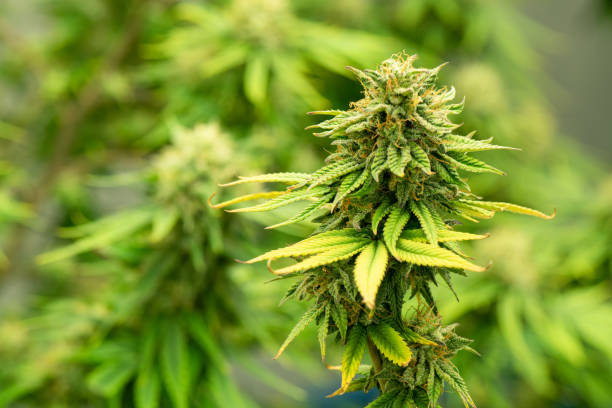
No grower wants to find spider mites on their cannabis plants. These tiny pests can quickly wreak havoc on a crop, causing leaf damage and stunted growth.
The good news is that there are some telltale signs of a spider mite infestation. By knowing what to look for, you can catch an infestation early and take steps to eliminate the pests before they cause too much damage.
One of the most common signs of spider mites is webbing. These tiny pests spin webs between the leaves of infested plants, which can make the leaves appear sticky. If you see webbing on your plants, it’s time to take a closer look for other signs of an infestation.
Spider mites also cause leaves to yellow or brown. You may notice small spots or stippling on the leaves as well. In severe cases, the leaves may curl up or drop off entirely. These symptoms are caused by the spider mites feeding on plant tissue.
Another way to tell if your plants have spider mites is to look for eggs. These tiny pests lay their eggs on the undersides of leaves. The eggs are usually white or translucent and can be difficult to see without a magnifying glass. If you suspect your plants have spider mites, check the undersides of the leaves for eggs.
Spider mites are one of the most common pests that affect cannabis plants. These tiny pests can quickly cause leaf damage and stunt plant growth.
By knowing what to look for, you can catch an infestation early and take steps to eliminate the pests before they cause too much damage.
If you see webbing, yellowing, or browning leaves, or small spots or stippling on the leaves, check for eggs on the undersides of the leaves. If you find eggs, your plants have spider mites and need to be treated immediately.
What does spider mite damage look like?
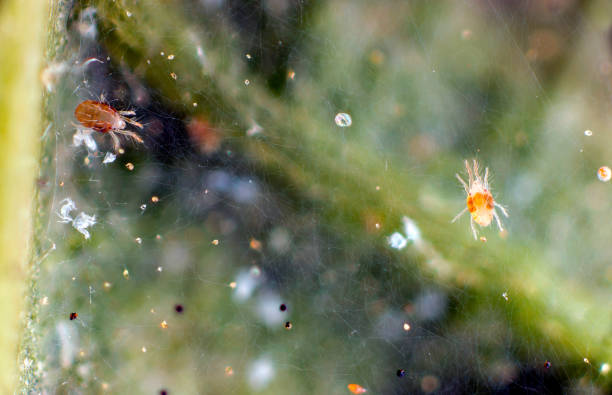
Spider mites are tiny pests that can cause big problems for your plants. These creatures are difficult to see with the naked eye, but they can quickly decimate a plant population if left unchecked. So, how can you tell if spider mites are damaging your plants? Read on to learn about the three main signs of spider mite damage.
Stippling or Yellowing of Leaves
One of the first signs of spider mite damage is stippling—tiny yellow or white dots—on the leaves of infested plants. This stippling is caused by the mites piercing the leaves and sucking out the chlorophyll. As more and more chlorophyll is removed, the leaves will begin to turn yellow and then brown. In severe cases, the entire leaf may turn brown and fall off the plant.
Fine Silk Webbing
Another telltale sign of spider mite damage is the presence of fine silk webbing between the leaves and stems of infested plants. This webbing is produced by the mites and is used to protect their eggs and larvae from predators. The webbing also acts as a “sail” that helps spider mites spread from one plant to another.
Burning or Wilting of Leaves
If spider mite populations are left unchecked, they will eventually destroy the leaves of infested plants. This will cause the leaves to take on a burned or wilted appearance. In extreme cases, all of the leaves on a plant may be killed, causing it to die completely.
Spider mites are tiny but terrible creatures that can wreak havoc on your plants. If you suspect that spider mites are damaging your plants, be on the lookout for stippling, fine silk webbing, and burning or wilting leaves. If you see any of these signs, take immediate action to eliminate the spider mites before they have a chance to do any further damage.
Will my plant recover from spider mites?
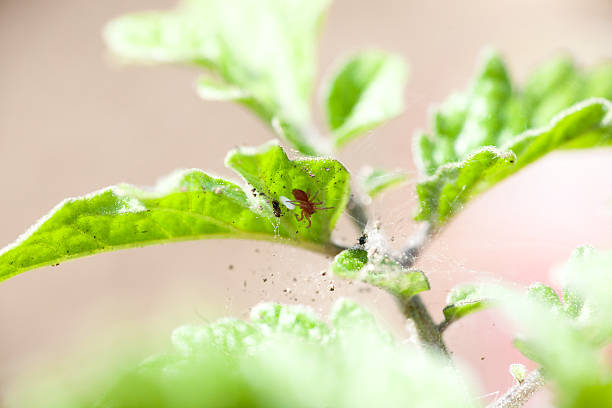
Blog Introduction: Spider mites are one of the most common houseplant pests. These tiny creatures suck the sap from plants, which can cause leaves to turn yellow, and brown, and eventually drop off. While a heavy infestation will kill a plant, spider mites are typically not fatal and there is a good chance your plant can recover if you take action quickly. Here’s what you need to do.
Remove the Pests
The first step is to get rid of the spider mites themselves. You can do this by spraying your plant with water or by wiping the leaves down with a damp cloth. This will remove many of the spider mites, but it’s unlikely that you’ll be able to get them all this way. For a more thorough solution, you can buy an insecticide at your local gardening store. Just be sure to follow the directions on the label carefully.
Improve Air Circulation
Spider mites thrive in humid conditions, so improving air circulation around your plant will make it harder for them to survive. Start by moving your plant to a brighter location— spider mites prefer low-light areas. Then, make sure you’re not over-watering your plant as this will create humid conditions that spider mites love. Finally, consider getting a small fan to circulate the air around your plant more effectively.
Boost Your Plant’s Health
A healthy plant is better able to withstand an attack from spider mites (or any other pest). So, if your plant has been infested, now is a good time to give it some extra TLC.
Start by fertilizing your plant according to the package directions—this will help it grow strong roots and leaves. You should also check the soil moisture level frequently and water when necessary. By following these tips, you can help your plant recover from an infestation and prevent future problems down the road.
Spider mites are one of the most common houseplant pests but there’s no need to despair if you find them on your plants. With a little effort, you can get rid of spider mites and help your plant recover fully. The key is to act quickly and be diligent in your caretaking; by following these tips, you’ll have your green thumb back in no time!
What is the fastest way to get rid of spider mites?
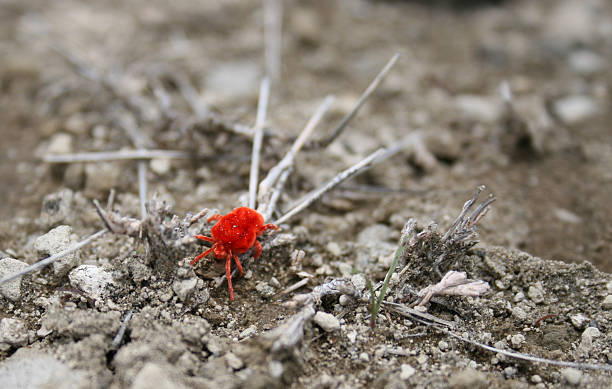
No one likes spider mites. These tiny pests are a big problem for both indoor and outdoor plants, and getting rid of them can be a real challenge. If you’re looking for the fastest way to eliminate spider mites from your home or garden, you’ve come to the right place. Here are four methods that will help you get rid of spider mites quickly and effectively.
Introduce natural predators.
If you have an infestation of spider mites, one of the best ways to get rid of them is to introduce their natural predators into the environment. Phytoseiulus persimilis and Amblyseius californicus are two types of predatory mites that will feed on spider mites and help to control the population. You can purchase these predatory mites online or at a garden center.
Use a soap spray.
Another effective way to get rid of spider mites is to use a soap spray. Mix equal parts water and dish soap together in a spray bottle and mist the leaves of your plants where you see spider mites. The soap will kill the mites on contact. Be sure to test the spray on a small area first to make sure it doesn’t damage the plant leaves.
Use insecticidal oil.
If soap sprays aren’t doing the trick, try using an insecticidal oil such as neem oil or horticultural oil. Oils work by smothering the mites and disrupting their life cycle. Be sure to follow the instructions on the label carefully when using oils, as they can damage plants if used improperly. Also check out the five we recommend to get the job done.
1. Safer Brand 5118-6 Insecticidal Soap Concentrate
Safer Brand 5118-6 Insecticidal Soap Concentrate is an organic insecticide that can be used on a variety of plants, including fruits, vegetables, and ornamentals. The soap kills mites by suffocating them and is safe to use around children and pets.
2. Monterey LG6150 Garden Insect Spray
Monterey LG6150 Garden Insect Spray is an organic insecticide that can be used on a variety of plants, including fruits, vegetables, and ornamentals. The spray kills mites by contact and is safe to use around children and pets.
3. Neem Oil
Neem oil is an organic insecticide that can be used on a variety of plants, including fruits, vegetables, and ornamentals. The oil kills mites by contact and is safe to use around children and pets.
4. Cedar Oil
Cedar oil is an organic insecticide that can be used on a variety of plants, including fruits, vegetables, and ornamentals. The oil kills mites by contact and is safe to use around children and pets.
5. Diatomaceous Earth
Diatomaceous earth is an organic insecticide that can be used on a variety of plants, including fruits, vegetables, and ornamentals. The powder kills mites by contact and is safe to use around children and pets
Try using attracted traps.
Attracted traps use pheromones to lure in male spider mites so they can be trapped before they have a chance to mate. This is an effective method for reducing the population of spider mites over time. You can purchase attracted traps online or at a garden center.
Spider mites are pesky little pests that can be difficult to get rid of. However, with perseverance and patience, you can eliminate them from your home or garden using one of these four methods.
Try combining different techniques for best results, and always be sure to follow directions carefully when using pesticides or insecticidal oils. With a little effort, you can get rid of those pesky spider mites for good!
Preventing Future Infestations
Mites are tiny pests that can cause a lot of damage to your home. If you have recently had a mite infestation, you may be wondering how you can prevent them from coming back. Luckily, there are a few things you can do to deter mites from setting up shop in your home again.
Seal Up Any Cracks or Gaps
Mites can squeeze through tiny cracks and gaps in your home’s exterior. To prevent them from getting inside, seal up any cracks or gaps around windows, doors, and pipes with caulk or weatherstripping. You should also inspect your foundation for cracks and fill them in with concrete.
Keep Your Home Clean and Dry
Mites like dirty, cluttered environments. To deter them, keep your home clean and free of clutter.
Vacuum regularly and wipe down surfaces with a damp cloth. Be sure to wash bedding and towels in hot water frequently. In addition, mites thrive in humid environments. To make your home less hospitable to them, use a dehumidifier to keep indoor humidity below 50%.
Use Pest Control Products Wisely
There are a variety of chemicals you can use to kill mites and discourage them from coming back. However, it’s important to use these products wisely to avoid harming yourself, your family, or your pets.
When using pesticides, always follow the manufacturer’s instructions carefully. Store pesticides out of reach of children and pets and never use more than the recommended amount.
Some pest control products contain harmful chemicals that can be dangerous if used incorrectly. If you’re unsure about using a particular product, ask a professional pest control operator for advice.
Mite infestations can be frustrating and costly to deal with. However, there are some things you can do to prevent them from happening again in the future. To deter mites, seal up any cracks or gaps in your home’s exterior, keep your house clean and dry, and use pest control products wisely. By following these steps, you can help keep your home mite-free for good!








